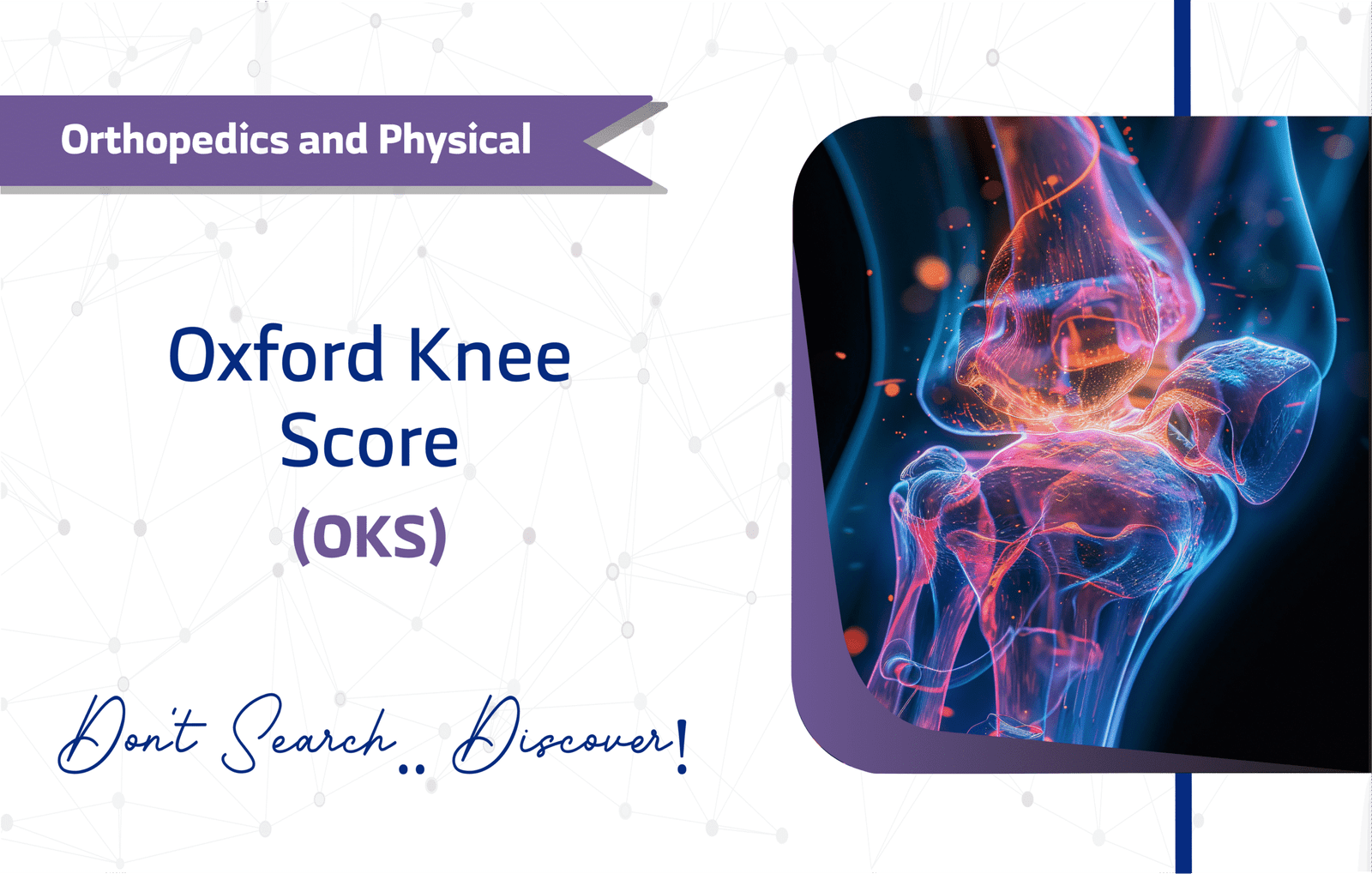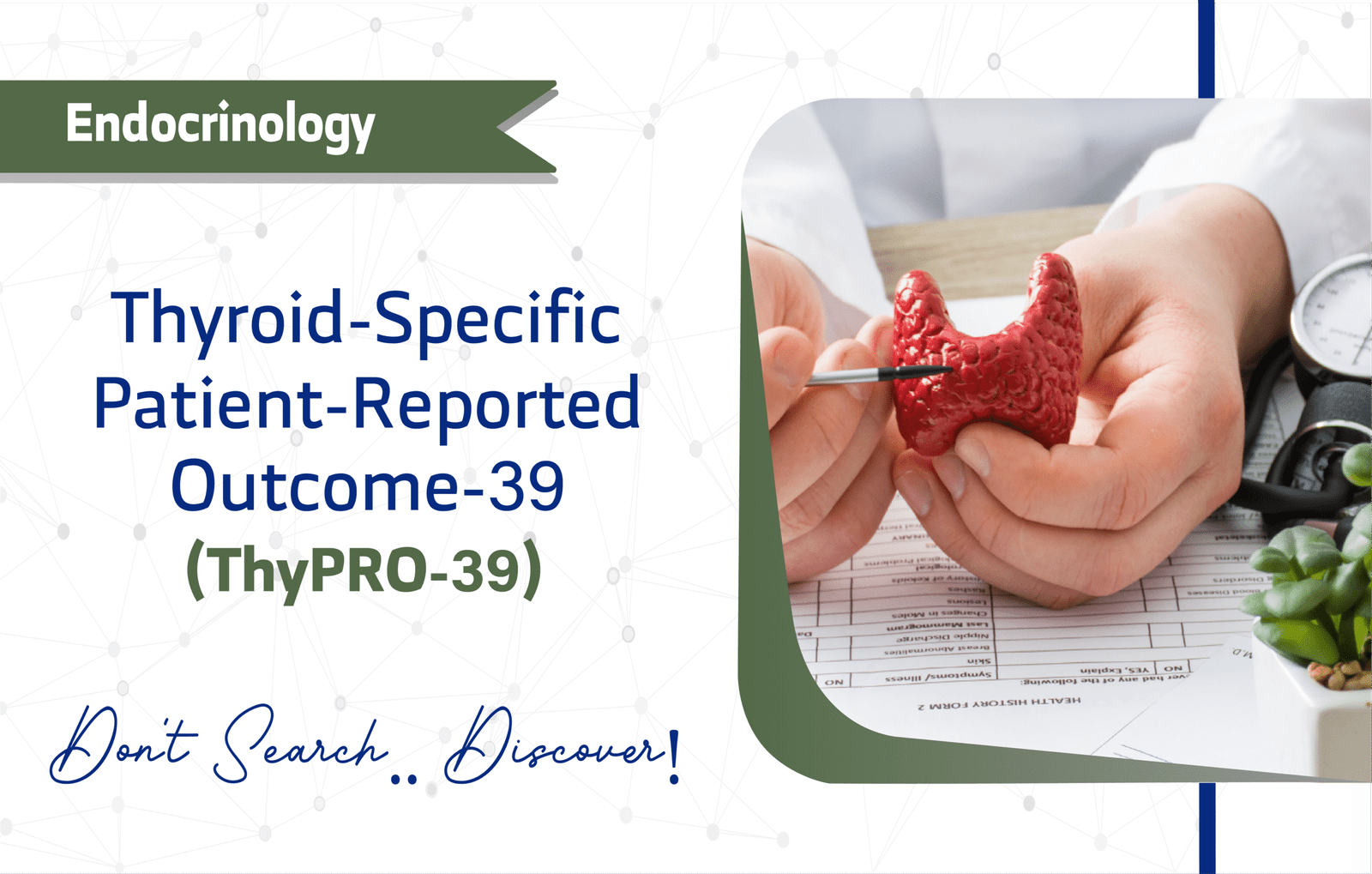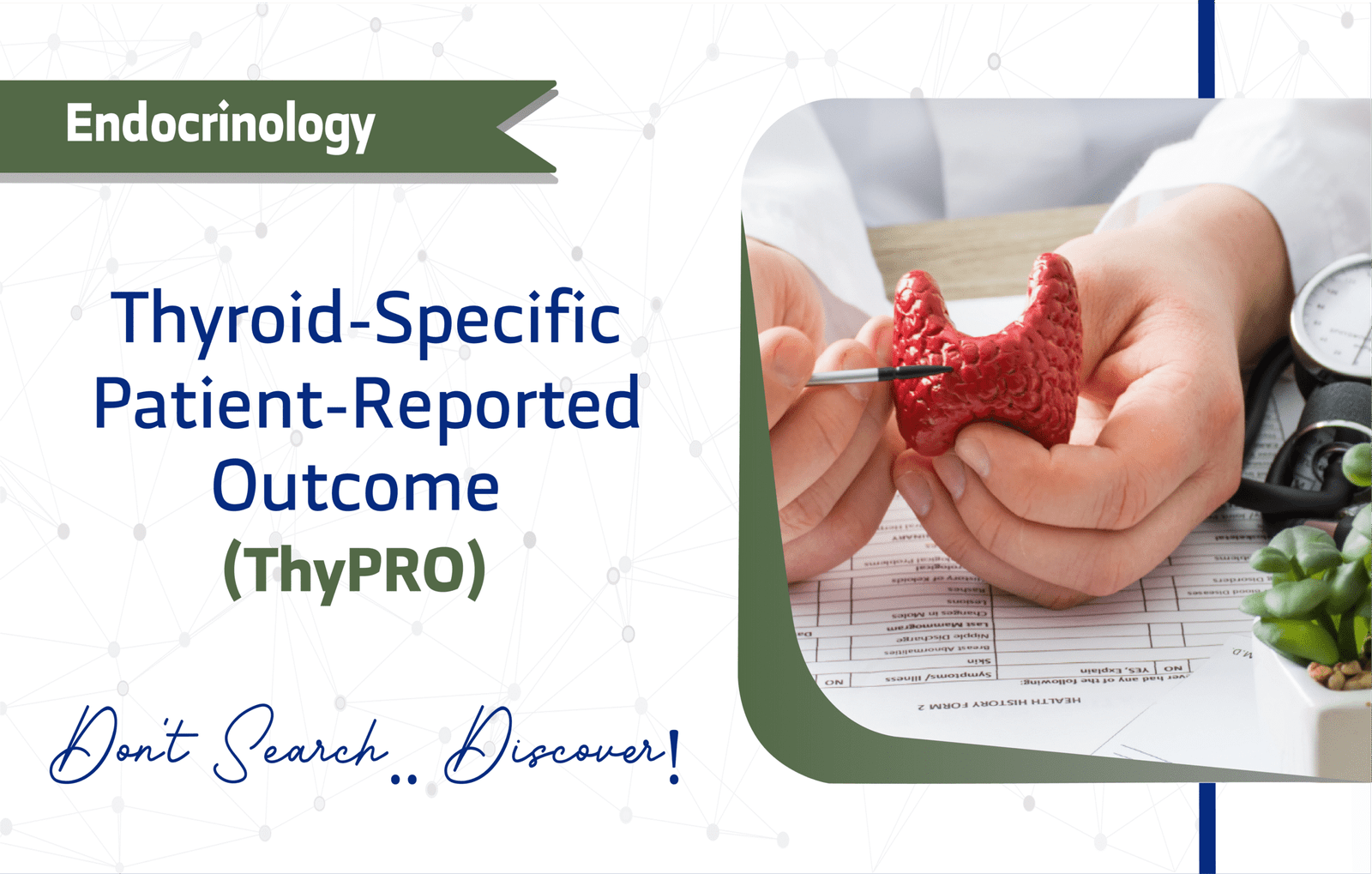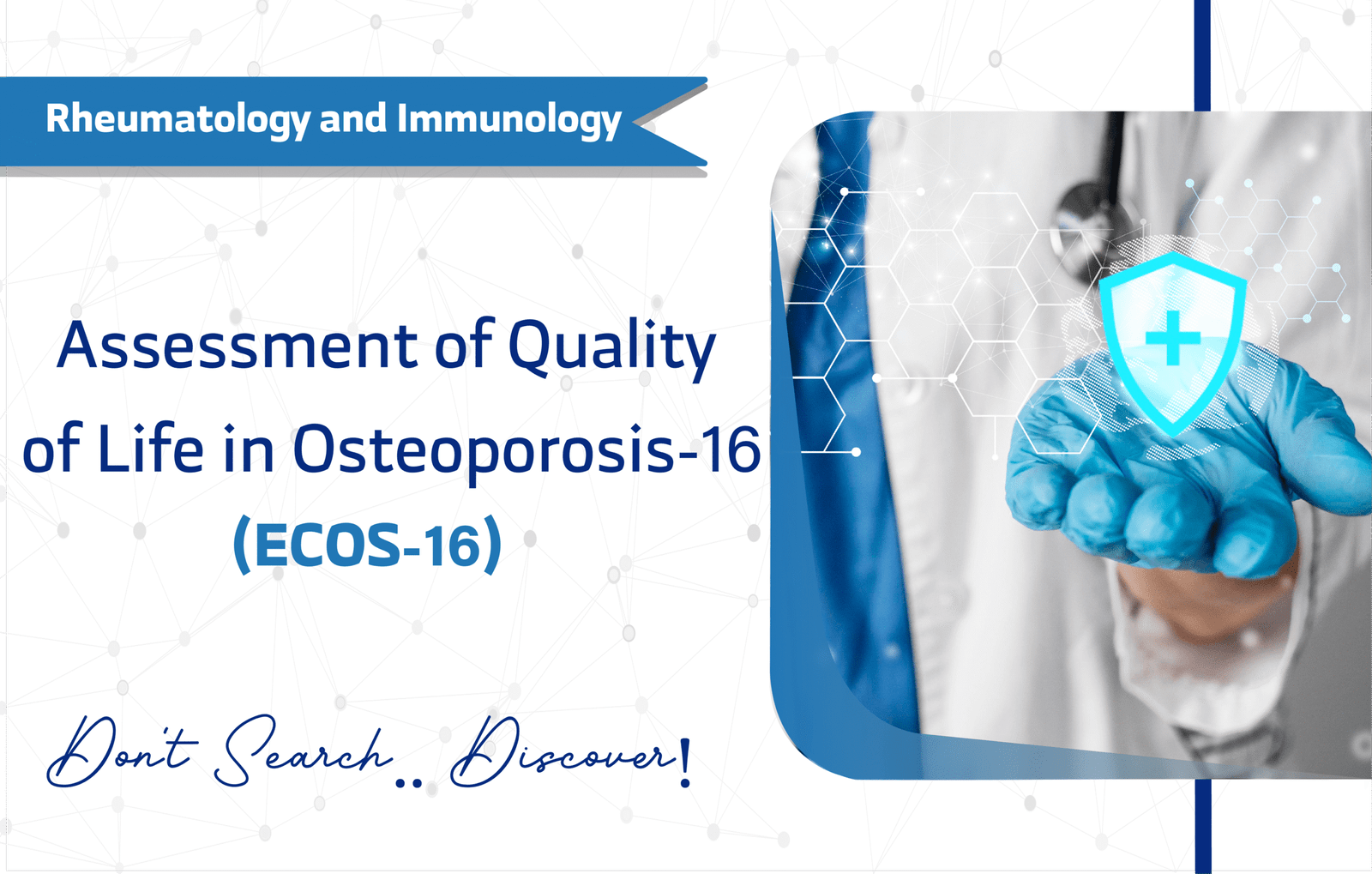Introduction
The Oxford Knee Score (OKS) is a highly respected patient-reported outcome measure (PROM) that researchers specifically designed to assess patient-perceived outcomes following knee interventions. A team including J. Dawson and R. Fitzpatrick first developed the OKS in 1998; subsequently, it has become a cornerstone in orthopedic research and clinical practice, especially in the evaluation of total knee replacement (TKR) surgery. Indeed, the OKS effectively captures both pain and functional limitations, thereby offering a holistic view of a patient’s knee health. Consequently, with over 2000 citations, its robust validation and widespread adoption underscore its pivotal role in guiding clinical decisions and advancing research in knee conditions.
Therefore, this article will explore the OKS’s key features, diverse applications, and profound clinical utility; in doing so, it offers actionable insights for researchers and clinicians to optimize patient assessment and improve outcomes in knee health management.
Key Features of the Oxford Knee Score (OKS)
Purpose and Use
Primarily, the OKS assesses the patient-perceived outcomes of total knee replacement (TKR) surgery, which encompasses both pain and function. Although researchers initially developed it for individuals undergoing knee arthroplasty, its utility has since expanded significantly. For instance, researchers and clinicians now widely use it to evaluate outcomes following various interventions, such as pharmacological treatments, osteotomies, rehabilitation programs, and fracture management. Ultimately, this versatility makes the OKS an invaluable tool for understanding the comprehensive impact of knee conditions and their treatments on a patient’s daily life.
Target Population
Researchers validated the OKS for adult populations, particularly for those undergoing knee arthroplasty. Generally, this includes patients aged 45 and older due to the prevalence of osteoarthritis, which is the most common reason for knee replacement. However, its applicability spans a broader adult age range including:
Young adults (18-24 years)
Middle-aged adults (25-44 years)
Older adults (45-64 years)
Seniors (65+ years)
As a result, it is a flexible instrument for assessing knee health across various adult demographics.
Structure
The OKS is a concise, 12-item questionnaire that delves into a patient’s experience with knee pain and function over the past four weeks. The main domain is orthopedic surgery, and furthermore, the questions use a structure designed to elicit responses on a Likert scale. Specifically, they cover pain severity and functional limitations related to daily activities such as walking, climbing stairs, kneeling, and personal care.
The Pain component (5 items): questions 2, 3, 7, 11, 12
The Physical Function component (7 items): questions 1, 4, 5, 6, 8, 9, 10
These items collectively provide a comprehensive assessment of how knee problems impact a patient’s quality of life and functional independence.
Scoring Method
Each of the 12 items on the OKS is scored on a 5-point Likert scale, ranging from 0 to 4. For each question, a score of 4 indicates the best outcome (least pain/difficulty), while a score of 0 indicates the worst outcome (most pain/difficulty).
The total OKS score is derived by summing the scores from all 12 items, resulting in a potential total score ranging from 0 to 48. Importantly, a higher score on the OKS consistently signifies better outcomes, indicating less pain and improved function.
- If more than two responses are missing, it is advised not to calculate the overall score.
- If only one or two items are unanswered, clinicians are recommended to compute a mean score based on the patient’s remaining responses.
- In cases where a question has multiple answers, the lowest (i.e., worst) score should be used in the calculation.
For more details on this scoring method or the original method check: OKS Scoring Guide (link)
Administration Format
The OKS is exceptionally efficient to administer, typically requiring less than 5 minutes for completion. Its flexibility permits administration through various formats, including:
Paper-based questionnaires
Digital platforms (online)
In-person interview
Phone/Video calls
This flexibility offers considerable convenience in diverse clinical and research settings. Notably, its administration or interpretation requires no specialized training, which in turn makes it highly accessible for a wide range of healthcare professionals.
Applications of Oxford Knee Score (OKS)
Indeed, the OKS is a versatile tool with several key applications in both clinical practice and research:
Screening: The OKS quickly identifies patients who require support.
Outcome Measurement: In addition, it serves as a gold standard for measuring patient-perceived outcomes after knee surgery or other interventions.
Monitoring Progress: Similarly, clinicians effectively track a patient’s recovery and the effectiveness of treatments over time.
Treatment Planning: Consequently, the scores directly help professionals tailor rehabilitation programs and care plans.
Research Endpoint: Finally, it consistently functions as a reliable endpoint for clinical trials and observational studies evaluating new treatments or surgical techniques for knee conditions.
Languages and Availability
To support its global application, developers have extensively translated and validated the OKS in over 30 languages, including:
English
Arabic
Spanish
French
Russian
German and many others.
Unquestionably, this widespread linguistic availability significantly enhances its value in diverse clinical and research contexts worldwide, thereby facilitating international comparisons and collaborations. While the OKS is free for non-commercial use, providers may charge fees for accompanying materials. Notably, using the Oxford Knee Score requires completing a copyright license application because it is under a Proprietary license.
Reliability and Validity
Experts recognize the OKS as a highly reliable and valid instrument for assessing knee health outcomes. For example, an excellent Cronbach’s alpha of 0.93 strongly supports its psychometric soundness, which reflects outstanding internal consistency. Numerous validation studies across diverse patient populations and settings have confirmed its robustness, solidifying its status as a trusted measure for patient-perceived outcomes.
Limitations and Considerations
Despite its strengths, the OKS has a few limitations:
Cultural Bias: First, the interpretation of certain self-care behaviors and the questions themselves may not translate perfectly across all cultural contexts, potentially influencing patient responses.
Specific Focus: Second, it primarily focuses on patient-perceived pain and function related to the knee and, therefore may not fully capture other relevant aspects of health-related quality of life or non-knee-related impacts.
Self-Report Measure: As a self-report tool, a patient’s subjective perception, recall bias, or social desirability bias can, in turn, influence responses.
Age-Related Interpretation: Lastly, while applicable across adult age ranges, some studies suggest that normative scores might vary across different age groups, particularly for older adults; therefore, this may warrant age-specific considerations in interpretation.
Other Versions and Related Questionnaires
Researchers should be aware of other versions of the OKS.
OKS-APQ (Activity and Participation Questionnaire): For instance, researchers designed this eight-item score to be used alongside the OKS.
In fact, clinicians often use the OKS in conjunction with other assessment tools to provide a more comprehensive evaluation of knee health and general well-being. These may include:
WOMAC
KOOS
SF-36
Knee Society Score
Additional Resources
- A direct link to the Original Validation Study link
- A sample copy is available at Oxford University Innovation websitelink
- For inquiries regarding the OKS, contact the developers through Oxford University Innovation Ltd Email enquiries@innovation.ox.ac.uk
- For additional OKS resources, consult the official Oxford University Innovation website link
- Another study about the OKS link
Frequently Asked Questions (FAQ)
- Who can use the OKS?
Clinicians, researchers, and healthcare providers use the OKS for adult patients, particularly those undergoing knee interventions or suffering from knee conditions such as osteoarthritis. - How long does it take to complete the OKS?
Patients typically take less than 5 minutes to complete the OKS, which makes it highly feasible for use in various clinical and research settings. - How is the OKS administered?
Healthcare teams can administer the questionnaire via paper-based forms, digital platforms, an interview format, or through phone/video calls, offering flexibility in usage. - Is there any cost to using the OKS?
The OKS is free for non-commercial use. However, for commercial or funded academic projects, formal permission from the developers or copyright holders may be necessary.
A Word from ResRef about Oxford Knee Score (OKS)
The Oxford Knee Score (OKS) remains a pivotal tool in assessing patient-perceived outcomes in knee health, particularly after interventions like total knee replacement. Its concise 12-item structure efficiently captures both pain and functional limitations, offering crucial insights for clinical decision-making and research. Because of its extensive validation and widespread adoption, the OKS provides a reliable measure to monitor patient progress and evaluate treatment efficacy. Consequently, it contributes significantly to enhancing patient care and, moreover, advancing the understanding of knee conditions globally.
References
- Dawson, J., Fitzpatrick, R., Murray, D., & Carr, A. (1998). Questionnaire on the perceptions of patients about total knee replacement. Journal of Bone and Joint Surgery. British Volume, 80(1), 63–69. Link
- Murray, D. W., Fitzpatrick, R., Rogers, K., Pandit, H., Beard, D. J., Carr, A. J., & Dawson, J. (2007). The use of the Oxford hip and knee scores. Journal of Bone and Joint Surgery. British Volume, 89(8), 1010–1014. Link
- Harris, K. K., Dawson, J., Jones, L. D., Beard, D. J., & Price, A. J. (2013). Extending the use of PROMs in the NHS–using the Oxford Knee Score in patients undergoing non-operative management for knee osteoarthritis: a validation study. BMJ Open, 3(8), e003365. Link
- Khatri, C., Harrison, C. J., MacDonald, D., Clement, N., Scott, C. E. H., Metcalfe, A. J., & Rodrigues, J. N. (2020). Item response theory validation of the Oxford Knee Score: analysis of a national patient-reported outcome measure dataset. Bone & Joint Research, 9(8), 498–507. Link









1 thought on “The Oxford Knee Score (OKS): A Full Guide for Researchers and Clinicians”
Your website is beautifully designed – I picked up several new ideas from it. I especially like the clear structure and the variety of content.